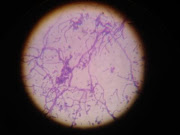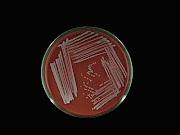JAC Antimicrob Resist https://doi.org/10.1093/jacamr/dlaf186
JAC-Antimicrobial Resistance
Antibiotic
resistance and β-lactam resistant genes among bacterial isolates from clinical,
river water and poultry samples from Kathmandu, Nepal
Upendra
Thapa Shrestha1, Manash Shrestha2, Nabaraj Shrestha3, Komal
Raj Rijal1 and Megha Raj Banjara1*
1Central Department of Microbiology, Institute of Science and
Technology, Tribhuvan University, Kirtipur, Kathmandu, Nepal;
2Asia Pacific Malaria Elimination Network (APMEN), Singapore;
3Central Veterinary Laboratory (CVL), Tripureshwor, Kathmandu,
Nepal
*Corresponding
author.
E-mail: megha.banjara@cdmi.tu.edu.np
Received
17 August 2025; accepted 25 September 2025
Objective: To assess the
antibiotic resistance and beta-lactam resistance genes among bacterial isolates
from clinical, river water and poultry samples.
Methods: Staphylococcus
aureus, Escherichia coli and Pseudomonas aeruginosa were isolated from clinical,
poultry and river water samples collected during 2020–22. They were subjected
to antimicrobial susceptibility tests following the CLSI guidelines. The
bacteria were screened for β-lactam resistance genes blaTEM, mcr-1,
mecA and blaNDM-1.
Results: Among 2835
clinical samples, E. coli was the most frequently isolated bacterium
(10.3%, 292), followed by S. aureus (6.0%, 169) and P. aeruginosa (4.0%,
143). Of the E. coli isolates, 64.4% exhibited multidrug resistance
(MDR) and 43.8% were extended-spectrum β-lactamase (ESBL) producers, with 44.5%
and 16.4% harbouring the blaTEM and mcr-1 genes, respectively.
Among S. aureus isolates, 80.9% of methicillin-resistant strains (MRSA)
carried the mecA gene, while 30.1% of metallo-β-lactamase
(MBL)-producing P. aeruginosa were positive for the blaNDM-1 gene.
In poultry samples, 30.4% of E. coli isolates harboured the blaTEM gene
among 128 ESBL producers, and the prevalence of colistin-resistant isolates
carrying mcr-1 was higher than in clinical samples. In contrast, the
occurrence of ESBL-producing E. coli and MRSA, along with their
associated resistance genes, was lower in water samples.
Conclusions: This study demonstrated widespread multidrug
resistance (MDR) and ESBL production among clinical, poultry and river water
bacterial isolates in the Kathmandu valley. Colistin-resistant E. coli carrying
the mcr-1 gene, methicillin-resistant S. aureus (MRSA) with mecA
and metallo-β-lactamase (MBL)-producing P. aeruginosa harboring blaNDM-1
were detected across sources. These findings emphasize an urgent One Health approach to curb the
growing threat of antimicrobial resistance in the region.
Citation: Thapa Shrestha U, Shrestha M, Shrestha N, Rijal KR, Banjara MR. Antibiotic resistance and β-lactam resistant genes among bacterial isolates from clinical, river water and poultry samples from Kathmandu, Nepal. JAC Antimicrob Resist. 2025 Oct 17;7(5):dlaf186. doi: 10.1093/jacamr/dlaf186. PMID: 41113068; PMCID: PMC12531798.
FULLTEXT: Download
























